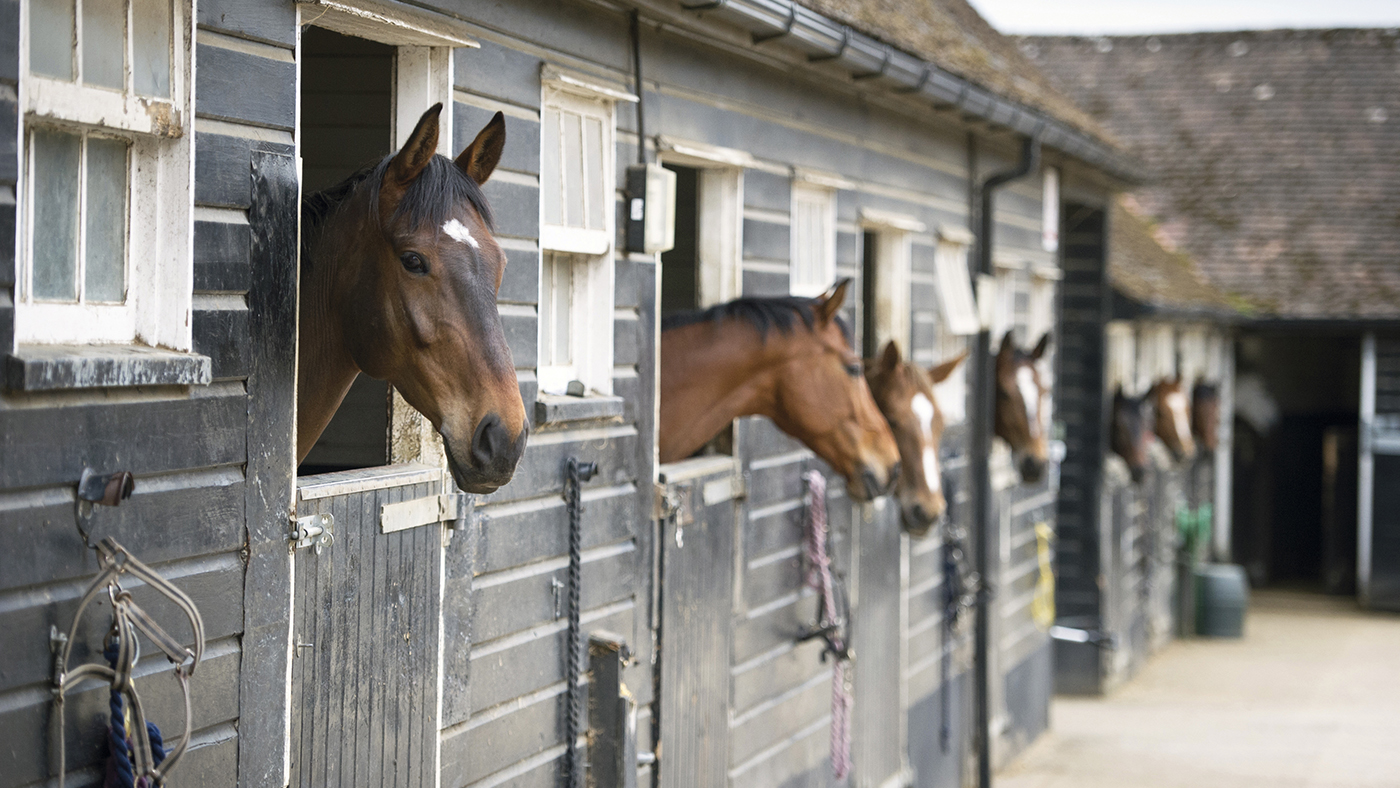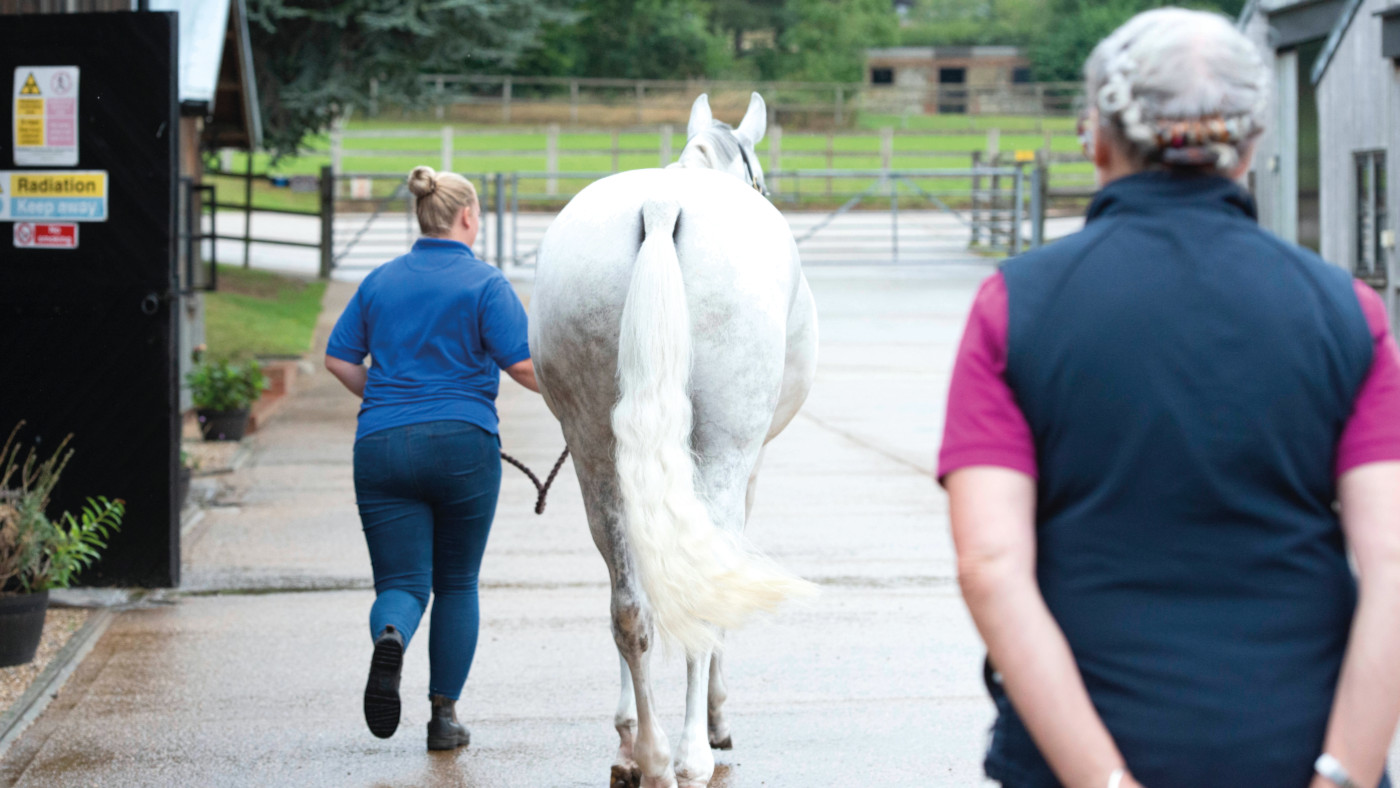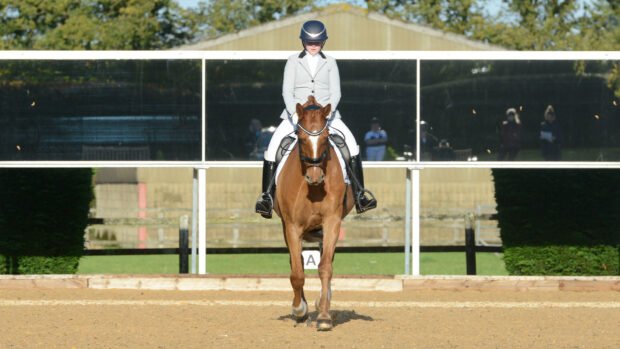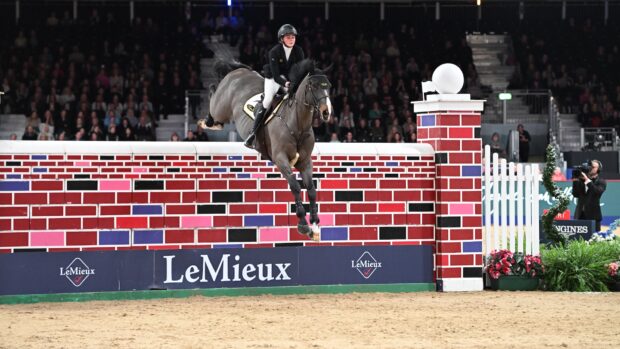Farewell to one of the quickest cross-country horses of his time
Tributes have been paid to Irish sports horse Who’s Blitz, known for his speed across country. Swedish team rider Dag Albert bought Blitz as a four-year-old and he was later sold to Hannah “Sparkles” Bailey (now Watson), who was working for Dag at the time. Sparkles and Blitz competed up to intermediate level, then he returned to Dag following a horse swap. Dag and Blitz went on to compete at Badminton in 2006 and 2007, the Europeans in 2005, and the World Equestrian Games in 2006, going clear inside the time on all four occasions. “He was very fast – he finished 40 seconds inside the time at Badminton one year and was first to go at the Blenheim Europeans, trotting through the finish line 12 seconds inside the time and everyone thought it was going to be easy,” said Dag.
Read more from Dag and Sparkles
How viewing horses through their eyes can help improve their welfare

Library image.
Anthropomorphism was one of the key topics at the Horses Inside Out Conference (17-18 February). Redwings head of welfare and behaviour Nic De Brauwere discussed the human tendency to attribute human characteristics or behaviour to an animal, and how looking at this from the horse’s perspective can be beneficial. “What’s important is to not throw anthropomorphism out, but to recognise that it is potentially dangerous if you think about [horses] as you,” he said. “On the other hand, if you flip it around and say, ‘What if I was that horse?’ you become a critical anthropomorphist. To be a good one, you have to understand as much as you can about that animal.”
The most common findings in pre-purchase vettings

New research by the Royal Veterinary College has revealed the most common findings in pre-purchase examinations (PPEs). Researchers analysed 113 vetting certificates, of which 57.1% had “prejudicial findings”, and lameness was the most common at 55.3%. Of the certificates, 14.5% had findings on diagnostic imaging; the study’s author David Bolt discussed the use of X-rays in PPEs. “Not all radiographic changes mean the horse is not going to be fit for purpose,” he said, adding that on the other hand, radiographic or other imaging may indicate a “developmental problem” that could cause issues in the future.
Find out more about the research
You might also be interested in:

Here to Help: new campaign to encourage more riders into eventing

The Horse & Hound Podcast 146: Kim Bailey on the Cheltenham Festival and the highs and lows of training racehorses

10 tasty Easter gifts with an equestrian twist

‘I went splat!’ Eventer aiming for Luhmühlen after breaking two vertebrae

Subscribe to Horse & Hound magazine today – and enjoy unlimited website access all year round
Horse & Hound magazine, out every Thursday, is packed with all the latest news and reports, as well as interviews, specials, nostalgia, vet and training advice. Find how you can enjoy the magazine delivered to your door every week, plus options to upgrade your subscription to access our online service that brings you breaking news and reports as well as other benefits.




